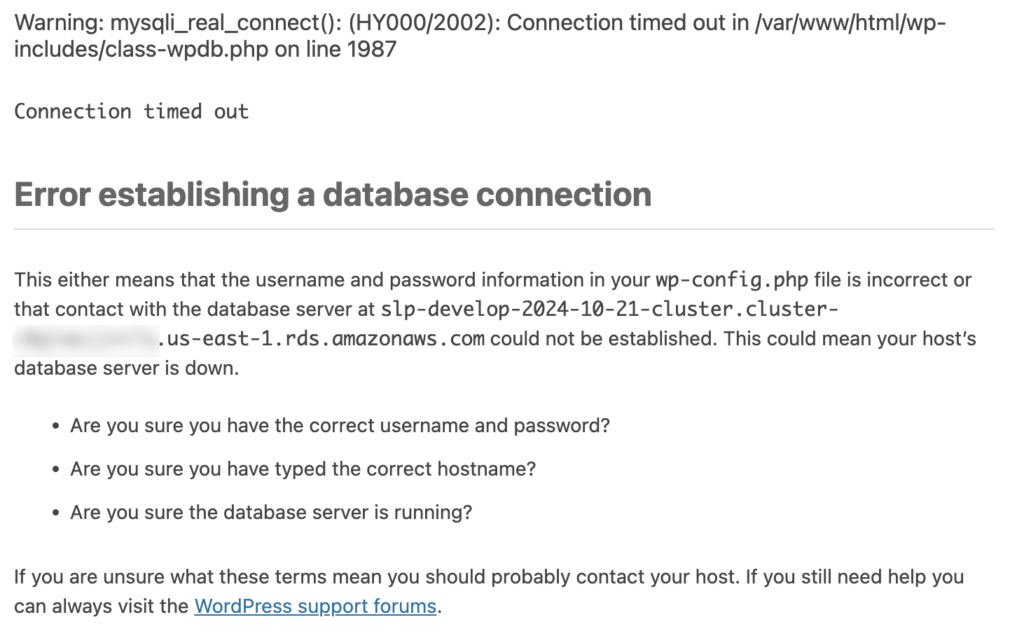The SaaS platform uses internal processing hooks to auto-detect the hostname and update the WordPress data accordingly to change the site and home URL. This makes it easier to transfer the data set from production to staging and production. See the Creating A Development or Staging Database Copy post for more details on that process.
A fully qualified domain name (FQDN) example would be ‘dashboard.storelocatorplus.com’.
A uniform resource locator (URL) example would be ‘https://dashboard.storelocatorplus.com’.
Places site URL data is stored
Database Tables
- wp_blogs
- wp_options / wp_<site#>_options
- option_name: siteurl set to the URL
- option_name: home set to the URL
- option_name: myslp_dashboard_theme_options , option_value array key ‘dashboard_site’ set to the URL
- wp_site
- record id: 1, domain column set to FQDN
Environment Variables
- WP_HOME, value URL
- WP_HOSTURL , value FQDN
- WP_SITEURL, value URL
Dynamic URL Management
The SaaS platform uses the sunrise.php early-loading PHP code to set the domain from the web server provided $_SERVER[‘HTTP_HOST’]. It leverages the WordPress : home_url filter to set the URL for the site impacting WordPress functions such as get_rest_url() and home_url() among a dozen others.
The sunrise.php file will change home_url, site_url, and admin_url dynamically via WordPress filters.
Via MySLP Dashboard
\MySLP_Addon::updateUserBlogDomain()
Runs on the dashboard hook to WordPress : init
- \MySLP_Addon::updateUserBlogDomain()
- \MySLP_Addon::performUserBlogUpdates()
- \MySLP_Addon::change_blog_urls_if_needed()
- \MySLP_Addon::performUserBlogUpdates()
This will update the wp_<site#>_options entries for siteurl and home.
Via MySLP Dashboard Theme
The MySLP Dashboard theme contains some default URLs that are used to create links, including logout, recover password, etc. These options are stored in the wp_options table in the myslp_dashboard_theme_options option key under a subkey in option_value named dashboard_site.




